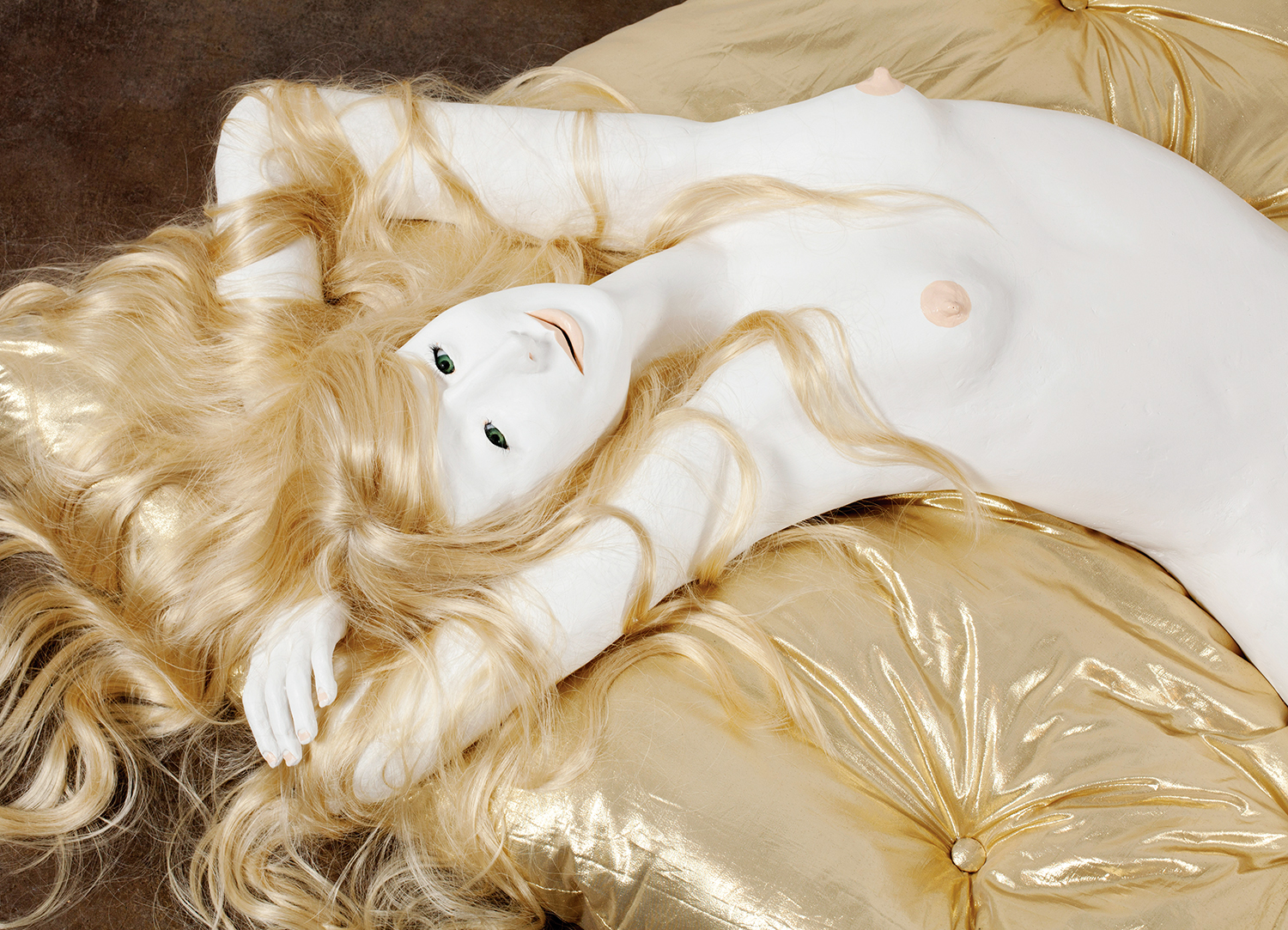Purple Magazine
— F/W 2015 issue 24
Elizabeth Jaeger
 Platinum Musing, (detail) 2011, Hydrocal, ceramic, synthetic hair, house paint, and gold lame
Platinum Musing, (detail) 2011, Hydrocal, ceramic, synthetic hair, house paint, and gold lame
Artist, New York
interview by MYRIAM BEN SALAH
portrait by DEVYN GALINDO
All images courtesy of the artist and Jack Hanley Gallery
MYRIAM BEN SALAH — You’ve had a wide range of day jobs. When did you realize you wanted to make art and be an artist?
ELIZABETH JAEGER — It was a process. I have a specific memory from elementary school of my classmate Alexandra drawing a picture of a tree. Her lines felt precise and poetic in a way that I craved. That was my first inkling, and I still have the drawing. From there, I started to draw classmates’ faces. Drawing felt direct in a way that language didn’t, and I latched onto it. Then there was Marion Jannot, an amazing artist and totally overqualified high school teacher. She…